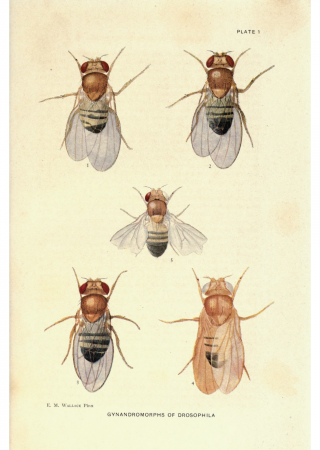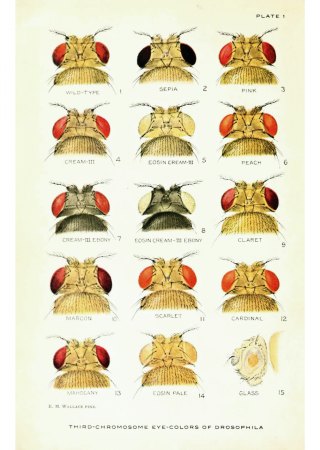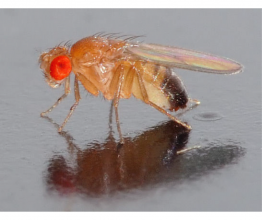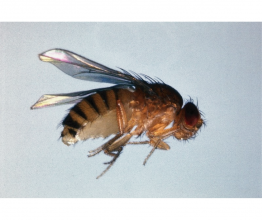Common Fruit Fly
- …after honeybees, fruit flies are the most thoroughly studied species of insect?
- …because of their simple requirements and quick breeding, fruit flies are a favorite for genetic researchers?
- …their world-wide distribution is a modern phenomenon, and they originally probably came from tropical west Africa?
- …there are over 77,000 scientific publications dealing with fruit flies?
- …like other Diptera, fruit flies have their hindwings transformed into balance organs called halteres?
- …the scientific name Drosophila means 'dew lover'?
- …fruit flies have four chromosomes, containing about 15,000 genes?
These tiny flies are found anywhere around the world where they can find fermenting fruit. They live off the bacteria and yeast cells in such fruit. They appear in dining rooms, kitchens and larders. They are most numerous in fall, when most fruit is ripening. Male fruit flies, slightly smaller than females, conduct an elaborate aerial display before mating. After mating, the female lays up to 400 eggs, whose larvae hatch after fifteen hours. Their development is rapid and depends on local temperature; they may reproduce as soon as one week after hatching. Fruit flies are known transmitters of various microorganisms, primarily fungus and bacteria. Thanks to studies and experiments conducted on these flies, humans have acquired a better understanding of their own genetics, evolution and diseases.




